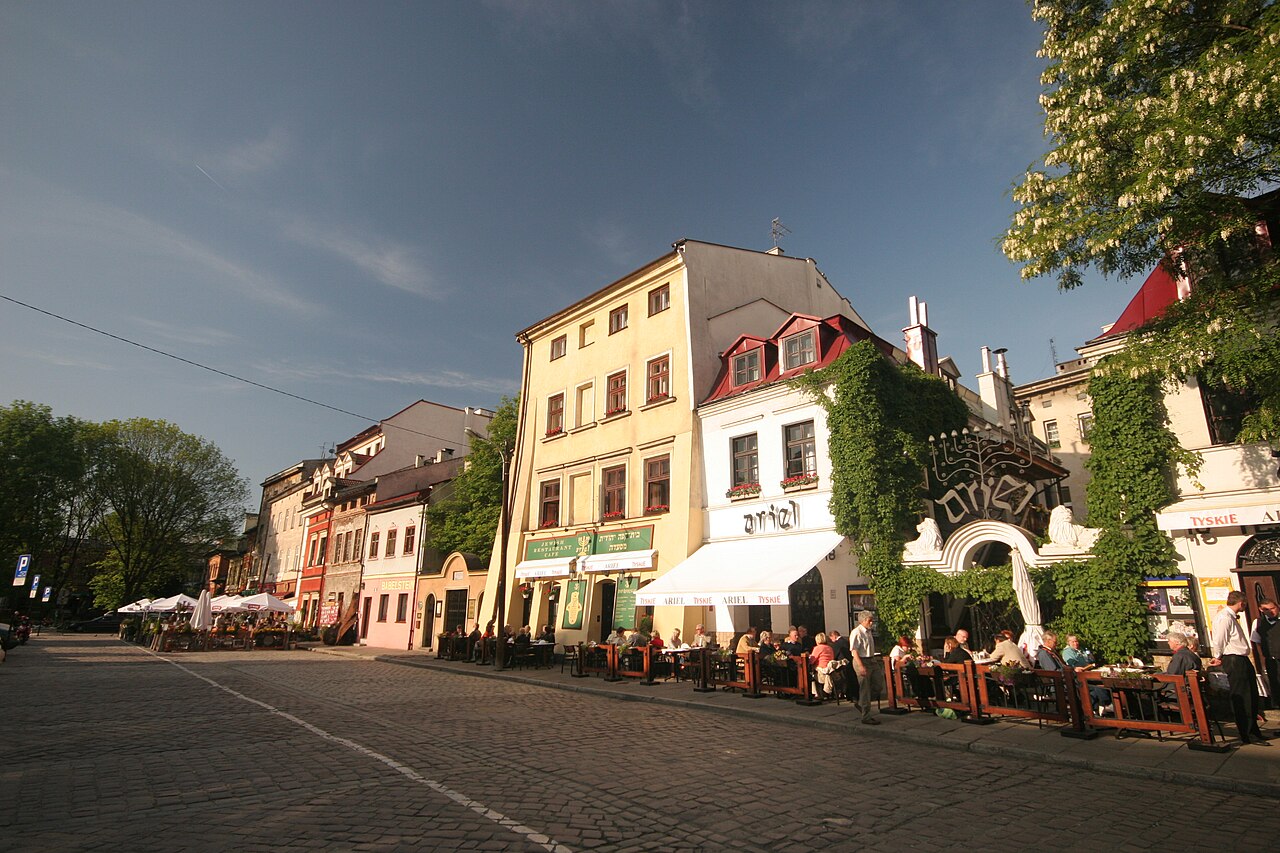 Uliczki Kazimierza
Uliczki Kazimierza
Za północną ścianą kościoła Bożego Ciała biegnie ul. Józefa, nazwana na cześć cesarza Józefa II, dawniej nosząca miano Żydowskiej. Pod nr. 38 stoi najwyższa na Kazimierzu bożnica Wysoka, ufundowana przez jakiegoś „niewiernego Żyda Izraela” w okresie 1556-1563, który kazał dobudować piętro do swojego domu i na nim urządzić salę modlitewną. Bożnica Wysoka, należąca w swoim czasie do najbogatszych synagog, zniszczona podczas wojny i potem odremontowana, wygląda dziś tak, jakby od czasów rabina Remuh nie była użytkowana. Ślady jej renesansowej świetności zachowały się w portalu i w szkarpach, dodających fasadzie potęgi. Jednak rozpaczliwie smutny zakątek przed bożnicą, gdzie króluje wilgoć i pustka, uzmysławia bardzo mocno „tłumną nieobecność” wypędzonych Żydów.
Wrotami do „Żydowskiego Kazimierza Zaginionego” jest ulica Szeroka wyglądająca bardziej jak wydłużony plac, która stanowiła niegdyś centrum handlowe dzielnicy. Ostatecznych kształtów nabrała w XVI w. Dzisiaj należy do najważniejszych atrakcji turystycznych Krakowa, choć i tak na ogół jest pusta i cicha. Na jej obrzeżach usytuowane są stare domy mieszkalne, bożnice, domy rytualne i cmentarz. Jak widać, jest ulicą wielkich i wymownych kontrastów: w rząd obskurnych kamienic wciskają się nowoczesne i odrestaurowane obiekty, w których mieszczą się kawiarnie, galerie i centra kultury. Obok wiekowego cmentarza funkcjonuje ekskluzywna restauracja.
Na krakowskim Kazimierzu znajduje się najstarszy w Polsce zabytek żydowskiej architektury sakralnej – jest nim Stara Synagoga (pod nr. 24) stojąca u południowego wylotu ulicy. Wybudowali ją czescy Żydzi w drugiej połowie XV w., a więc w okresie gwałtownego przyrostu ludności izraelickiej na Kazimierzu. W bożnicy, gdzie znajdowała się także siedziba władz kahalnych, koncentrowało się życie religijne, administracyjne i kulturalne mieszkańców Kazimierza. Obecnie można podziwiać jej renesansowe oblicze, nadane jeszcze w latach 1557-1570 przez florentczyka Mateusza Gucciego. Do lat 30. XX w. w Starej Bożnicy odmawiano specjalną modlitwę za Kazimierza Wielkiego, uznawanego przez Żydów za dobroczyńcę i opiekuna.
Synagoga przeżyła wiele pożarów i zniszczeń, ale nic nie dorównało spustoszeniom z czasów II wojny światowej, kiedy to naziści zdewastowali wnętrze, sklepienie i dachy, a cale przebogate wyposażenie zagrabili. Po wojnie obiekt odrestaurowano i przekazano w posiadanie Muzeum Historycznemu. Zbiory ujęte tytułem Tradycje i Sztuka Żydów Polskich rozmieszczono w dawnych salach modlitwy. Poza cennymi przedmiotami rytualnymi – skarboną, ołtarzem, bimą (czyli podwyższeniem służącym do odczytywania modlitw), można tu obejrzeć m.in. stare fotografie oddające ducha dawnego Kazimierza, księgi i obrazy, wśród których znalazła się kopia zaginionego obrazu Schylok i Jessyka Maurycego Gottlieba. W osobnym pomieszczeniu urządzono wystawę poświęconą historii zagłady Żydów krakowskich.
Kiedyś Kazimierz był Jerozolimą Europy. Kiedyś Kazimierz byt stolica intelektualną Żydów polskich. Dziś na Kazimierzu ślady po Żydach zacierają się powoli. Dziś Kazimierz jest najbardziej egzotyczną i najbardziej smutną dzielnicą Krakowa.
